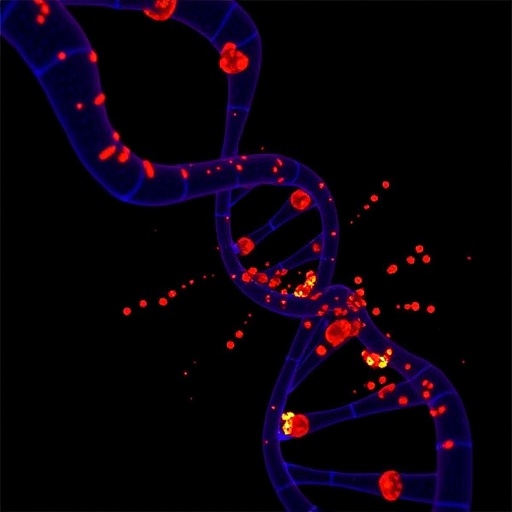
Credit: University of Colorado Cancer Center
A cancer cell is like a racecar, speeding through the process of cellular replication. But it has to stop at the G2M cell cycle checkpoint, where a race inspector called Wee1 checks it over for damage – cells with intact DNA can continue, while cells with damaged DNA have to stick around for repairs. The wait is worth it – there are curves ahead, and beyond the G2M checkpoint, cells with damaged DNA explode against the wall of “mitotic catastrophe.” But the thing is, we want cancer cells to explode; we would rather they speed through the G2M checkpoint without a Wee1 inspection and hit the wall of mitotic catastrophe.
A University of Colorado Cancer Center study presented at the American Association for Cancer Research (AACR) Annual Meeting 2019 suggests a way to ensure that cancer cells with damaged DNA fly past G2M to their doom: Blindfold the race inspector. By inhibiting the action of Wee1, cancer cells blow right through the G2M checkpoint and are doomed by their damaged DNA to mitotic catastrophe.
The Wee1 inhibitor adavosertib is used in a number of previous and ongoing clinical trials. However, the drug’s effectiveness has overall been promising but not perfect. The goal of the current study was to test drugs in combination with adavosertib that might magnify its effect. Specifically, the study hoped to find new combinations against pancreatic cancer, which carries a prognosis of less than 7 percent 5-year survival.
“The way the grant was focused was to utilize the list of the drugs in the NCI’s Cancer Therapy Evaluation Program (CTEP) and figure out what drugs might work together with adavosertib against pancreatic tumors,” says Todd Pitts, PhD, investigator at CU Cancer Center and assistant research professor in the CU School of Medicine Division of Medical Oncology.
More broadly, the work of the Pitts lab is at the cutting edge of a developing strategy against cancer, namely the manipulation of cells’ ability to repair damaged DNA. Commonly, DNA damage repair fixes mutations that could cause cancer. In other words, “DNA damage repair is usually a good thing,” Pitts says. But when the cells being repaired are cancer cells, the “good” outcome switches from repair to destruction.
Pitts and colleagues including study first author Sarah Hartman, MS, ended up testing the following drugs/combinations: adavosertib, irinotecan, navitoclax, capecitabine, adavosertib + irinotecan, or adavosertib + navitoclax, adavosertib + capecitabine. After using cell cultures to determine optimal doses, the researchers tested these drugs and drug combinations on PDX models of pancreatic cancer – basically, human tumors grown on mice.
The most successful combinations were adavosertib with irinotecan, navitoclax or capecitabine.
“The Wee1 inhibitor and navitoclax have overlapping toxicities, so we don’t believe that combination will move forward clinically. But the irinotecan and capecitabine combos could move forward,” Pitts says.
In fact, the group recently submitted a letter of intent to start a clinical trial of combination adavosertib with capecitabine. “There will always be some toxicity from a Wee1 inhibitor, but capecitabine is very well tolerated, so we think adavosertib with capecitabine would be a well-tolerated combination,” Pitts says.
###
Media Contact
Garth Sundem
[email protected]




